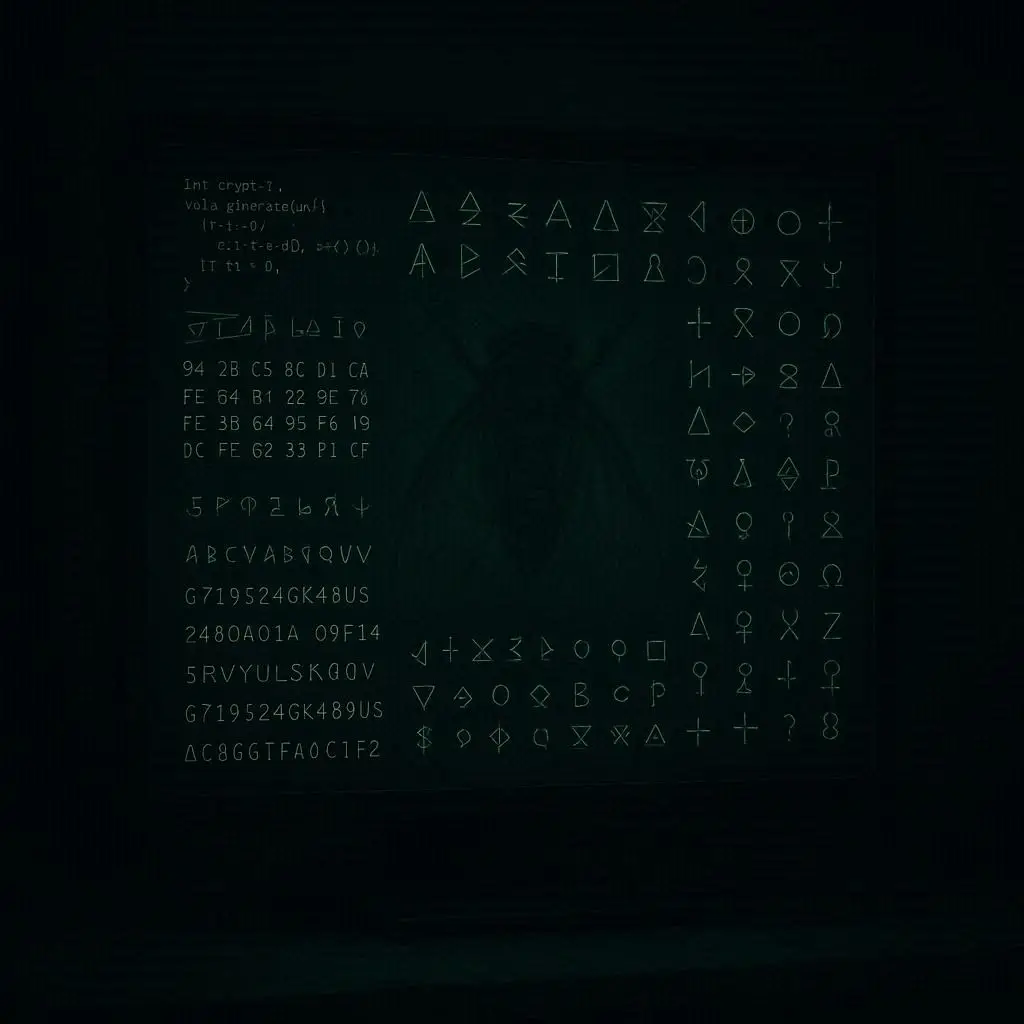Listen to “Cicada 3301” on Spreaker.
In January 2012, an anonymous message appeared on the internet. At first glance, it looked like just another strange post buried deep in the chaos of online forums. But hidden inside that message was the beginning of one of the most mysterious, confusing, and haunting puzzles the internet has ever seen.
It came from a group calling itself Cicada 3301.
The message said they were looking for “highly intelligent individuals.” And then, it offered a challenge: solve a series of complex puzzles. The winner, they promised, would be “recruited.” Recruited for what? Nobody knew.
And just like that, one of the greatest internet mysteries of all time was born.
To understand just how bizarre this was, you have to know what the puzzle looked like. It wasn’t a riddle you’d find in a kid’s activity book. It wasn’t a crossword or a Sudoku. These were puzzles so complicated that even cryptographers—people who study secret codes—struggled with them.
The first image posted by Cicada 3301 looked almost plain. It was just a black background with white letters:
“Hello. We are looking for highly intelligent individuals. To find them, we have devised a test.”
At the bottom, it included a clue hidden inside the code of the image itself.
The moment people realized there was something hidden inside, the internet lit up. Thousands of curious minds—hackers, programmers, puzzle lovers, conspiracy theorists—dropped everything to chase it.
And what they found was stunning.
Inside that first image was another hidden image. That led to a website. The website led to riddles based on obscure poetry and ancient literature. Those riddles led to phone numbers. The phone numbers gave voicemail messages. The voicemails pointed to locations all over the world.
For example, in Warsaw, Poland, a person following the puzzle might find a poster stuck to a lamp post with the Cicada logo on it—a black circle with the outline of a cicada, the insect that emerges from the ground after years of silence. The same posters appeared in Paris, in Seoul, in Sydney, in Mexico City.
The mystery had gone from an online post to the real world. And suddenly, it wasn’t just a puzzle—it was global.
Who had the resources to do this? Who could organize posters in multiple countries, timed perfectly to match a puzzle that only a handful of people even knew existed?
The people behind Cicada 3301 weren’t messing around.
Those who followed the puzzles closely discovered they required knowledge in all kinds of areas: cryptography, philosophy, art, mathematics, even music. Solving them wasn’t just about being smart—it was about being obsessed. About being willing to spend hours, days, even weeks, picking apart tiny details that didn’t make sense.
One puzzle led to another, which led to another, and then another. Each one more complex than the last. The internet had seen strange things before, but nothing on this scale.
And then came the question: what happens if you actually solve it?
Some people claimed to have reached the end. According to them, they were contacted directly by Cicada 3301. They were told they had “proven themselves” and were invited to join a private forum.
What happened in that forum? Nobody knows for sure. The people who claimed to have gotten that far said Cicada 3301 stopped communicating with them. Others suggested that maybe only a handful were chosen, and the rest were discarded.
It was like passing through a doorway only to find yourself in another, darker maze.
A year later, in 2013, another puzzle appeared. And again in 2014. Each one was just as elaborate as the first. Each one tested new skills, required new knowledge, and sent people chasing clues all over the world. And just like before, people online swarmed to solve it.
But then, something strange happened.
After 2014, Cicada 3301 went silent.
No new puzzles. No new challenges. Just… nothing.
It was as if they vanished into thin air.
And this silence only made the mystery grow.
Who were they? What did they want? And why did they stop?
Some believed Cicada 3301 was a recruitment tool for a government agency—maybe the CIA, the NSA, or MI6. After all, these puzzles were exactly the kind of thing intelligence agencies might use to find the best codebreakers in the world. If you can solve Cicada, you can probably crack top-secret codes.
Others believed it was a secret society, something out of a Dan Brown novel. A group of modern-day philosophers and hackers looking to recruit new members who shared their vision of knowledge and freedom.
And then, there were the darker theories. Some whispered that Cicada 3301 was a cult. Others thought it was a group of cybercriminals, using the puzzles to find skilled recruits for illegal operations. A few even suggested it was some kind of alien test, a way for non-human intelligence to make contact with the brightest humans.
The truth? Still unknown.
Even today, more than a decade later, nobody has ever come forward as the “leader” of Cicada 3301. No government has admitted to being behind it. No journalist has definitively cracked the case. The people who claim to have reached the end either disappeared back into their normal lives or stayed silent.
And that’s what makes it so chilling.
Think about it: an anonymous group managed to pull off a worldwide puzzle, involving some of the most complex cryptography ever seen, and they disappeared without a trace. Not even the FBI, which later admitted to investigating Cicada 3301, has offered an explanation.
When asked, the FBI simply said the case was “classified.”
The name itself—Cicada 3301—adds to the mystery. Why Cicada? Cicadas are insects that live underground for years, only to emerge in massive numbers after long silence. Was that a clue? Did the group intend to come back after years in hiding? And what about 3301? Was it a code, a random number, or something far more meaningful?
Some online communities believe Cicada 3301 is still out there, watching, waiting. That one day, the puzzles will start again, and the search will continue.
Others think it’s over—that the group made its point, recruited who they needed, and vanished for good.
But the most unsettling part? If Cicada 3301 was truly a recruitment tool, that means somewhere out there, right now, are people who solved it, who were chosen, who know exactly what it was all about.
And they’re not talking.
The internet is full of mysteries—creepypastas, hoaxes, urban legends. But Cicada 3301 is different. It was real. Verified by people who followed the clues in multiple countries, solved pieces of the puzzles, and documented the journey.
And yet, the ending remains hidden.
Maybe Cicada 3301 is gone forever. Or maybe, like the insect it’s named after, it’s just waiting underground, silent… until the time is right to emerge again.
And when it does, the question will return:
Who is behind Cicada 3301? And what do they want?




